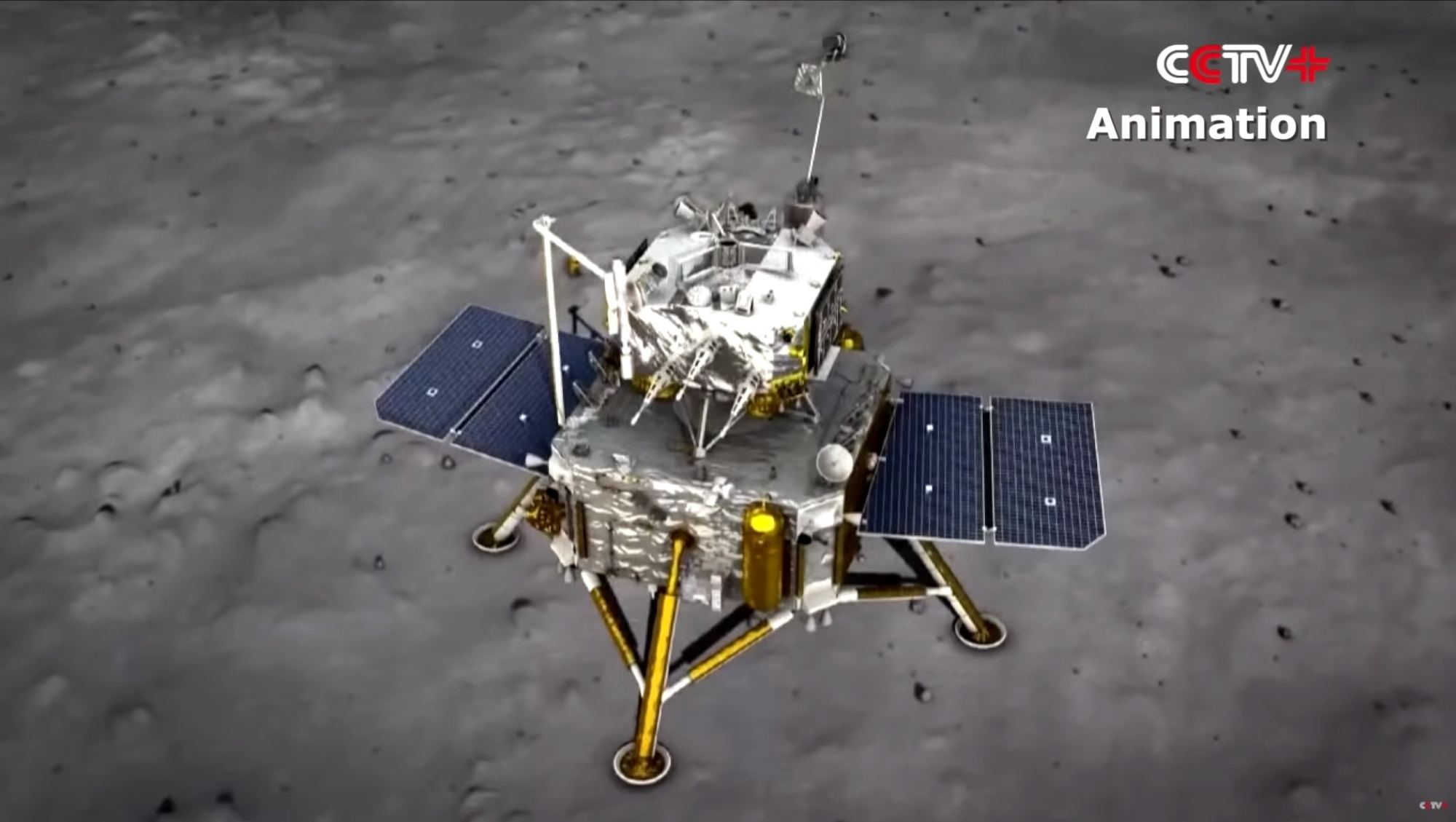For the third time in seven years, a Chinese robotic spacecraft has landed on the Moon — but now things will get really interesting: If the Chang’e-5 mission succeeds, the probe will deliver fresh samples from the Moon to Earth for the first time in 44 years.
Chang’e-5’s paired lander and ascent vehicle touched down in a lunar region known as Oceanus Procellarium, near Mons Rümker, at 1513 UTC (11:13 p.m. Beijing time) December 1st. The landing came eight days after the 9-ton spacecraft was launched from Wenchang Space Launch Center, and three days after the craft settled into lunar orbit.
In preparation for touchdown, the lander and ascent vehicle separated from its orbiter and descended to the surface. Chinese state-run television tracked the descent, climaxing with what appeared to be a close-up view of the lunar surface from a camera aboard the lander. China’s Xinhua news service confirmed the landing minutes later.
The lander was due to start using its onboard drill and scoop-equipped robotic arm to collect samples of lunar rock and dirt within hours. The drill is capable of going 2 meters beneath the surface.
In addition to digging up samples, Chang’e-5 will study its surroundings with cameras and a suite of scientific instruments, including a ground-penetrating radar and a spectrometer. Because the lander is solar-powered, Chang’e-5 will have to complete its mission before the lunar night sets in on the Moon’s near side, less than two weeks from now.
Getting the samples back to Earth is the key task. After about two days of surface operations, mission controllers plan to have the ascent vehicle blast off from atop the lander, ferrying up to 2 kilograms of material to the orbiter. If the mission is successful, those samples will be placed in a capsule connected to the orbiter, which will then begin its homeward journey. The capsule would be dropped off to make a parachute-assisted descent to Inner Mongolia as the orbiter flies past Earth in mid-December.
A successful finish would mark the first robotic return of lunar samples since the Soviet Luna 24 mission made a delivery in 1976. NASA’s Apollo moon missions returned more than 380 kilograms of lunar rocks and soil for study on Earth between 1969 and 1972.
Samples from Mons Rümker would be special because they’re likely to represent the freshest geological material ever brought back from the Moon. The volcanic rocks in that region are thought to have formed 1.2 billion years ago, which is recent in geological terms. Such samples should shed new light on the evolution of the Earth-Moon system.
Thomas Zurbuchen, NASA’s associate administrator for science, tweeted his congratulations to China and the Chang’e-5 team.
“This is no easy task,” he wrote. “When the samples collected on the Moon are returned to Earth, we hope everyone will benefit from being able to study this precious cargo that could advance the international science community.”
Chang’e-5’s landing follows up on the Chang’e-3 lunar touchdown in 2013, and the Chang’e-4 mission that made an unprecedented soft landing on the Moon’s far side in 2019. Those spacecraft were equipped with solar-powered rovers that sent back data and imagery from the surface. Chang’e-4’s rover is still working, nearly two years after rolling onto the lunar surface.
Lead image: An artist’s conception shows China’s Chang’e-5 lander and ascent vehicle on the Moon. Credit: CCTV via YouTube

